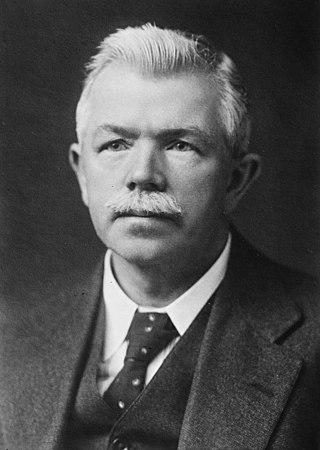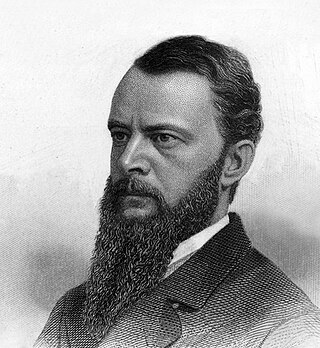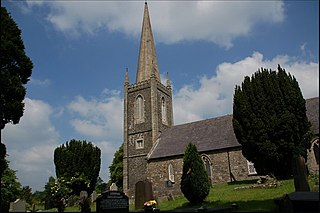
The Dean Cemetery is a historically important Victorian cemetery north of the Dean Village, west of Edinburgh city centre, in Scotland. It lies between Queensferry Road and the Water of Leith, bounded on its east side by Dean Path and on its west by the Dean Gallery. A 20th-century extension lies detached from the main cemetery to the north of Ravelston Terrace. The main cemetery is accessible through the main gate on its east side, through a "grace and favour" access door from the grounds of Dean Gallery and from Ravelston Terrace. The modern extension is only accessible at the junction of Dean Path and Queensferry Road.

James Barry was a military surgeon in the British Army. Originally from the city of Cork in Ireland, Barry obtained a medical degree from the University of Edinburgh Medical School, then served first in Cape Town, South Africa, and subsequently in many parts of the British Empire. Before retirement, Barry had risen to the rank of Inspector General in charge of military hospitals, the second-highest medical office in the British Army. Barry not only improved conditions for wounded soldiers, but also the conditions of the native inhabitants, and performed the first recorded caesarean section by a European in Africa in which both the mother and child survived the operation.

Edgeworth Lysaght, later Edward Anthony Edgeworth Lysaght, and from 1920 Edward MacLysaght, was a genealogist of twentieth-century Ireland. His numerous books on Irish surnames built upon the work of Rev. Patrick Woulfe's Irish Names and Surnames (1923).

John Robert Clynes was a British trade unionist and Labour Party politician. He was a Member of Parliament (MP) for 35 years, and as Leader of the Labour Party (1921–1922), led the party in its breakthrough at the 1922 general election.
Dubhaltach Mac Fhirbhisigh, also known as Dubhaltach Óg mac Giolla Íosa Mór mac Dubhaltach Mór Mac Fhirbhisigh, Duald Mac Firbis, Dudly Ferbisie, and Dualdus Firbissius was an Irish scribe, translator, historian and genealogist. He was one of the last traditionally trained Irish Gaelic scholars, and was a member of the Clan MacFhirbhisigh, a leading family of northern Connacht. His best-known work is the Leabhar na nGenealach, which was published in 2004 as The Great Book of Irish Genealogies, by Éamonn de Búrca, more than 300 years after it had been written.

Sophia Louisa Jex-Blake was an English physician, teacher, and feminist. She led the campaign to secure women access to a university education, when six other women and she, collectively known as the Edinburgh Seven, began studying medicine at the University of Edinburgh in 1869. She was the first practising female doctor in Scotland, and one of the first in the wider United Kingdom of Great Britain and Ireland; a leading campaigner for medical education for women, she was involved in founding two medical schools for women, in London and Edinburgh, at a time when no other medical schools were training women.

Sir Benjamin Ward Richardson was a British physician, anaesthetist, physiologist, sanitarian, and a prolific writer on medical history. He was the recipient of the Fothergill gold medal, awarded by the Medical Society of London in 1854 and of the Astley Cooper triennial prize for an essay in physiology.

Henry Horatio Wells, a Michigan lawyer and Union Army officer in the American Civil War, succeeded Francis Harrison Pierpont as the appointed provisional governor of Virginia from 1868 to 1869 during Reconstruction. A Radical Republican labeled a carpetbagger, Wells was defeated for election in 1869 by Gilbert C. Walker, who also became his appointed successor. Wells then served as U.S. Attorney for Virginia and later for the District of Columbia.

Edward Alfred Pollard was an American author, journalist, and Confederate sympathizer during the American Civil War who wrote several books on the causes and events of the war, notably The Lost Cause: A New Southern History of the War of the Confederates (1866) and The Lost Cause Regained (1868), wherein Pollard originated the long-standing pseudo-historical ideology of the Lost Cause of the Confederacy.

Loughbrickland is a small village in County Down, Northern Ireland, south of Banbridge on the main Belfast to Dublin road. In the 2011 Census it had a population of 693. Loughbrickland is within the Banbridge District.
Count Redmond O'Hanlon, was a 17th-century Irish tóraidhe or rapparee; an outlawed member of the Gaelic nobility of Ireland who still held to the code of conduct of the traditional chiefs of the Irish clans.

John Swinburne was an American physician and Republican congressman from New York who served as a medical officer from 1861 to 1864, during the Civil War and as a member of American Ambulance Corps at the Siege of Paris in 1870–71. In his last decade, 1880s, he was briefly mayor of Albany and represented New York's 19th congressional district for one term.
James Lawson Drummond was an Irish physician, naturalist and botanist.
William Holmes (1762–1834), M.D., J.P., was Surgeon-General to the British Forces in Canada; a magistrate and landowner at Quebec.

Poyntzpass is a small village on the border between southern County Armagh and County Down in Northern Ireland. It is situated in the civil parish of Ballymore and the historic barony of Orior Lower within the Armagh City, Banbridge and Craigavon area. It had a population of 552 people in the 2011 Census. It was a part of the South Armagh constituency and is now part of the Newry and Armagh constituency.

David Maclagan MD, FRSE, FRCSEd, FRCPE was a prominent Scottish medical doctor and military surgeon, serving in the Napoleonic Wars. He served as President of both the Royal College of Physicians of Edinburgh and the Royal College of Surgeons of Edinburgh. He was Surgeon in Scotland to Queen Victoria.

Peter David Handyside FRSE FRCSE (1808–1881) was a Scottish surgeon and anatomist. He was president of the Royal Medical Society in 1828. He won the Harveian Society Medal in 1827 and was its secretary in 1837. He was also president of the Medico-Chirurgical Society of Edinburgh in 1871.
William Jackson Elmslie was a Scottish Presbyterian doctor working primarily in Kashmir and the Punjab region in India from 1865 to 1872. Sponsored by the Church Missionary Society, Elmslie established Kashmir's first dispensary in Srinagar and later founded a small temporary hospital.
William Walker was a Scottish surgeon who specialised in ophthalmic surgery. He was Surgeon Oculist in Scotland to Queen Victoria and President of the Royal College of Surgeons of Edinburgh. He was a keen amateur photographer, whose calotypes were displayed in photography exhibitions.
Extramural medical education in Edinburgh began over 200 years before the university medical faculty was founded in 1726 and extramural teaching continued thereafter for a further 200 years. Extramural is academic education which is conducted outside a university. In the early 16th century it was under the auspices of the Incorporation of Surgeons of Edinburgh (RCSEd) and continued after the Faculty of Medicine was established by the University of Edinburgh in 1726. Throughout the late 18th and 19th centuries the demand for extramural medical teaching increased as Edinburgh's reputation as a centre for medical education grew. Instruction was carried out by individual teachers, by groups of teachers and, by the end of the 19th century, by private medical schools in the city. Together these comprised the Edinburgh Extramural School of Medicine. From 1896 many of the schools were incorporated into the Medical School of the Royal Colleges of Edinburgh under the aegis of the RCSEd and the Royal College of Physicians of Edinburgh (RCPE) and based at Surgeons' Hall. Extramural undergraduate medical education in Edinburgh stopped in 1948 with the closure of the Royal Colleges' Medical School following the Goodenough Report which recommended that all undergraduate medical education in the UK should be carried out by universities.













